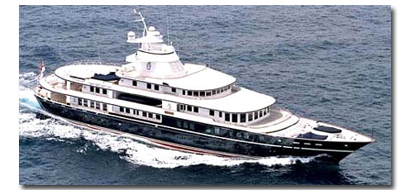|
|
 |
Knowledge Is Key
For Intelligent Decisions
Satellite Logic is a leading,
authoritative source of information in
the Satellite Industry. Located in the
heart of the Silicon Valley, Satellite
Logic provides one of the most
valuable and comprehensive
knowledge bases on the Satellite
market! This is a primary Worldwide
information center which enables our
clients to analyze, evaluate, inquire
and select their best tailored
solutions. Our company sets the
industry standards for targeted
buying leads, reflecting a dramatic
advance over traditional marketing
solutions.
|
|
|
 |

Being out at sea for long time can be an exciting experience, but
sometimes you want more than just stare at the waves. You want real
entertainment, like your home TV. That's what makes marine satellite
TV such a great and useful solution.
Just like your home satellite TV system, in order to watch satellite TV
programs you need the receiving dish, the receiver and of course a TV
set. Since there are no obstacles to interfere between the satellites and
your dish, the only problem is to be able to stabilize the antenna and
receive the broadcast.
Marine satellite TV antennas capture and track the signal being
broadcast from a satellite. Marine antennas vary in size from 14.5" in
diameter to 24" in diameter, and weigh around 30 pounds. They cost
anywhere from $500 for a fixed mount antenna to more than $7,000 for
a top-of-the-line antenna/receiver combo with all the bells and whistles.
In addition to an antenna, the marine satellite TV system also includes
the receiver, to decode the satellite signal and send it to a TV. You can
get self-contained units that consist of an antenna and receiver, or you
can get an antenna and purchase a separate receiver or get one free
from DISH Network or DIRECTV.
To start watching programs, there are two major satellite TV providers -
DISH Network and DIRECTV. DISH Network has 350 channels of satellite
TV programs, movie channels, sports packages, Sirius satellite radio,
news and weather channels, and pay-per-view programs. Their prices
start at $19.99 for 40 channels, and they will give you a free dish and
up to four free receivers when you subscribe to their service.
DIRECTV has 250 channels of satellite TV programs, sports packages,
movie channels, XM radio, news and weather, plus pay-per-view
programs. Their programming starts at $41.99 for 155 channels, and
they too will give you a free dish and four free receivers when you
subscribe to their service.

Today's equipment for marine satellite TV has made a long way and
provides high quality results. Most components have been specially
engineered to bring ultra stabilized, highly mobile satellite television
reception to a wider range of boats than ever before possible. It allows
boaters to enjoy big advantages in user-friendly operation and overall
system cost. From small size boats to large ships, marine satellite TV
technology provides excellent entertainment options. Walk-around sport
fishing boats, sailboats and other vessels now have the opportunity to
enjoy movies, sports, news and more while fishing inshore waters,
cruising the Intracoastal, overnighting at anchor or just relaxing
with friends in port.
The modern systems deliver nationwide satellite reception, HD
capabilities, MIM and stable performance unmatched even by larger,
costlier systems. By significantly lowering the required signal detect level
compared to other systems, marine satellite TV technology allows to lock
onto satellite signals with incredible speed and accuracy. As a result,
boaters can spend less time waiting and more time enjoying their
uninterrupted TV entertainment.
Once the satellite is acquired, the marine satellite system ensures that
the signal stays locked on regardless of vessel pitch, roll or heading.
Antennas use a sub reflector that constantly adjusts in response to the
slightest vessel movements, while the scan tracking function continually
measures the signals to obtain and lock onto the strongest one. This
means that boaters receive consistent, clear television reception under
real-world conditions on the water. There are also fixed sub reflectors,
but they need in addition rate sensors requiring stepper motors to
continually move the entire antenna in response to even slight boat
movements.
Switching channels when watching satellite TV on a boat sometimes
involves switching satellites. Until recently, that involved a manual
adjustment to the ACU or control panel and caused annoying
interruptions in TV viewing. Today the built-in MIM on some newer
models coupled with faster search and signal ID, allows for automatic
and immediate switching from one satellite to another.
So next time you're out at sea, prepare for an unexpected and amazing
surprise!
|
|
|
|
